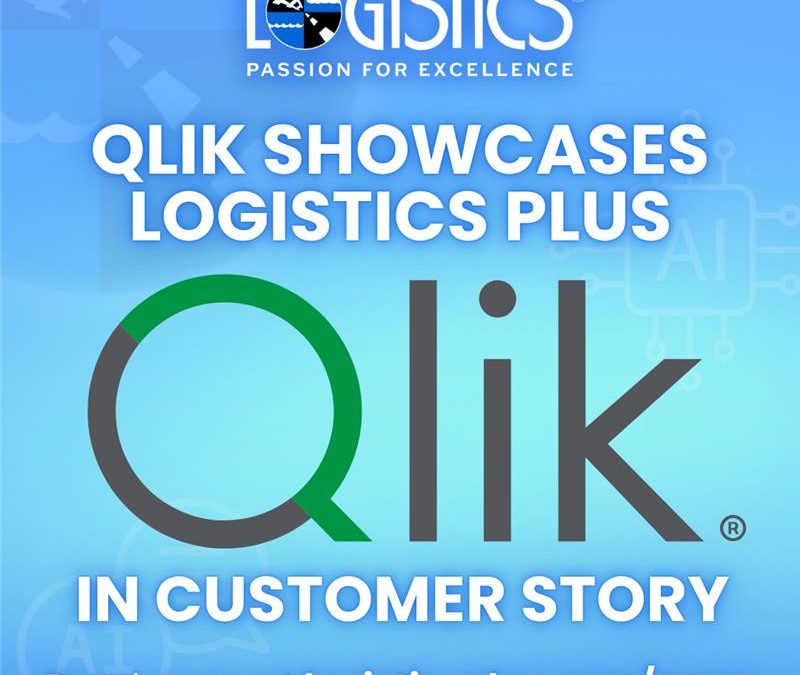
by vanessahuber | Aug 7, 2025 | News
Logistics Plus was featured in a recent press release and customer story by Qlik, highlighting the use cases, benefits, and results Logistics Plus has seen since implementing the platform. Below is a summary of the press release and customer story that was published on the Qlik website.
Logistics Plus is redefining agility and intelligence in global logistics through a partnership with Qlik, a leader in data integration, analytics, and AI. By adopting Qlik Cloud Analytics, Logistics Plus has transformed how it manages data, makes decisions, and serves customers across its global operations.
 In the customer story and press release, Qlik showcases how Logistics Plus is ‘punching above its weight class’ to deliver world-class BI- and AI-enabled solutions. From efficient service to competitive operation, Logistics Plus has vast data reserves with various platforms and tools that generate them. With the implementation of Qlik Cloud Analysis, vast amounts of information are provided quickly and efficiently, enabling critical information to be returned to customers.
In the customer story and press release, Qlik showcases how Logistics Plus is ‘punching above its weight class’ to deliver world-class BI- and AI-enabled solutions. From efficient service to competitive operation, Logistics Plus has vast data reserves with various platforms and tools that generate them. With the implementation of Qlik Cloud Analysis, vast amounts of information are provided quickly and efficiently, enabling critical information to be returned to customers.
In an industry where speed and foresight are critical, Qlik enabled Logistics Plus to:
- Reduce overall shipment error rates to under 1%
- Reduce task times from days to seconds for reports and interventions
- Create AI-powered predictions to identify likely delays and trigger early action
- Update dashboards rapidly to share directly with customers and executives
With support from Qlik partner B EYE, Logistics Plus modernized MyFreightTrends™ on its cloud-based eShipPlus transportation management system (TMS) and embedded predictive intelligence into operations. This enables anticipating delays, taking proactive action during transit, and providing customers with actionable options, rather than just updates. Logistics Plus is expanding its use of Qlik’s AI portfolio to unlock deeper insights, tighter customer experiences, and faster responses in a dynamic market.
Ryan McGregor, Director of Business Intelligence at Logistics Plus, was a key driver in implementing the Qlik solutions and is prominently featured in a video and comments throughout the piece. The video can be watched online at https://videos.qlik.com/watch/iVo1Ba6YSh2i6oWNsS6kis?.
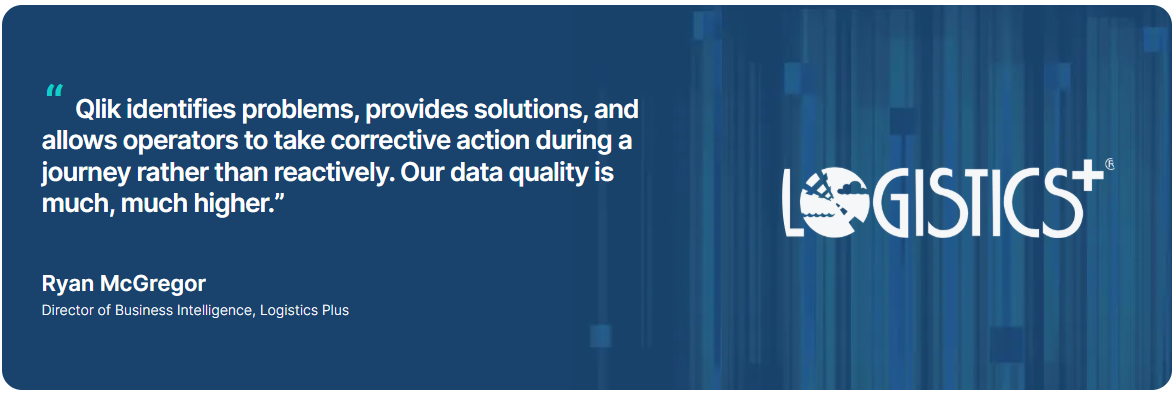
The Qlik press release can be found at https://www.qlik.com/us/news/company/press-room/press-releases/logistics-plus-outpaces-larger-rivals-with-ai-powered-supply-chain-intelligence-from-qlik
The Qlik customer feature, including a downloadable PDF of the story, can be found at https://www.qlik.com/us/solutions/customers/customer-stories/logistics-plus
About Qlik
Qlik converts complex data landscapes into actionable insights, driving strategic business outcomes. Serving over 40,000 global customers, our portfolio provides advanced, enterprise-grade AI/ML, data integration, and analytics. Our AI/ML tools, both practical and scalable, lead to better decisions faster. We excel in data integration and governance, offering comprehensive solutions that work with diverse data sources. Intuitive analytics from Qlik uncover hidden patterns, empowering teams to address complex challenges and seize new opportunities. As strategic partners, our platform-agnostic technology and expertise make our customers more competitive.

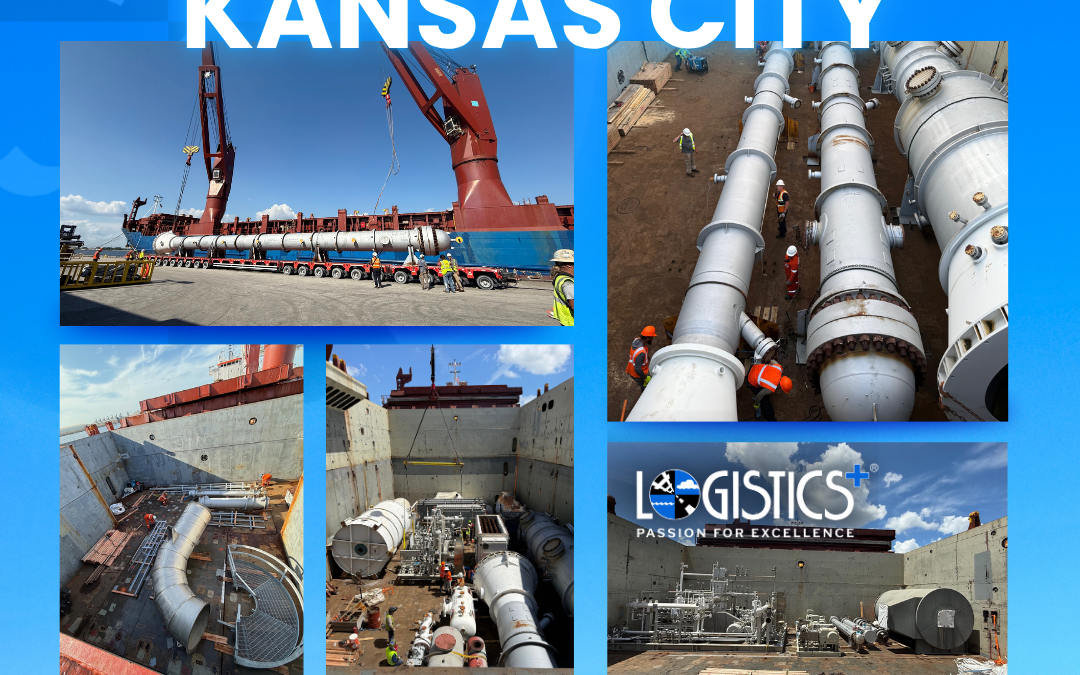
by vanessahuber | Jul 23, 2025 | News
 The Logistics Plus (LP) Kansas City team was contracted to survey 68 pieces of cargo, totaling 4,400 CBM, stored across multiple locations, including equipment still in operation at a major oil refinery. Over the span of a year, the Kansas City (KC) team developed a comprehensive logistical plan and budget to support the client’s presentation to their end buyer.
The Logistics Plus (LP) Kansas City team was contracted to survey 68 pieces of cargo, totaling 4,400 CBM, stored across multiple locations, including equipment still in operation at a major oil refinery. Over the span of a year, the Kansas City (KC) team developed a comprehensive logistical plan and budget to support the client’s presentation to their end buyer.
Following the start of the refinery dismantling, the KC team was re-engaged to manage the procurement of all shipper-owned containers and coordinate transportation to and from various job sites and warehouse facilities. The team also oversaw all terminal communications related to the export containers and managed the chartering of a breakbulk vessel from Tampa, Florida, to Surabaya, Indonesia. Logistics Plus also provided full insurance coverage and certificates, while addressing client inquiries throughout the project.
The scope of work handled by the LP Kansas City team included:
- Surveying cargo across multiple storage locations, including operational refinery equipment
- Developing a detailed logistics plan and budget for client presentation
- Procuring shipper-owned containers for international transport
- Coordinating inland transportation between job sites and warehouses
- Managing terminal communications for export containers
- Chartering a breakbulk vessel from Tampa, FL to Surabaya, Indonesia
- Providing insurance coverage and documentation through the LP Insurance team
Photos from this project are available below.
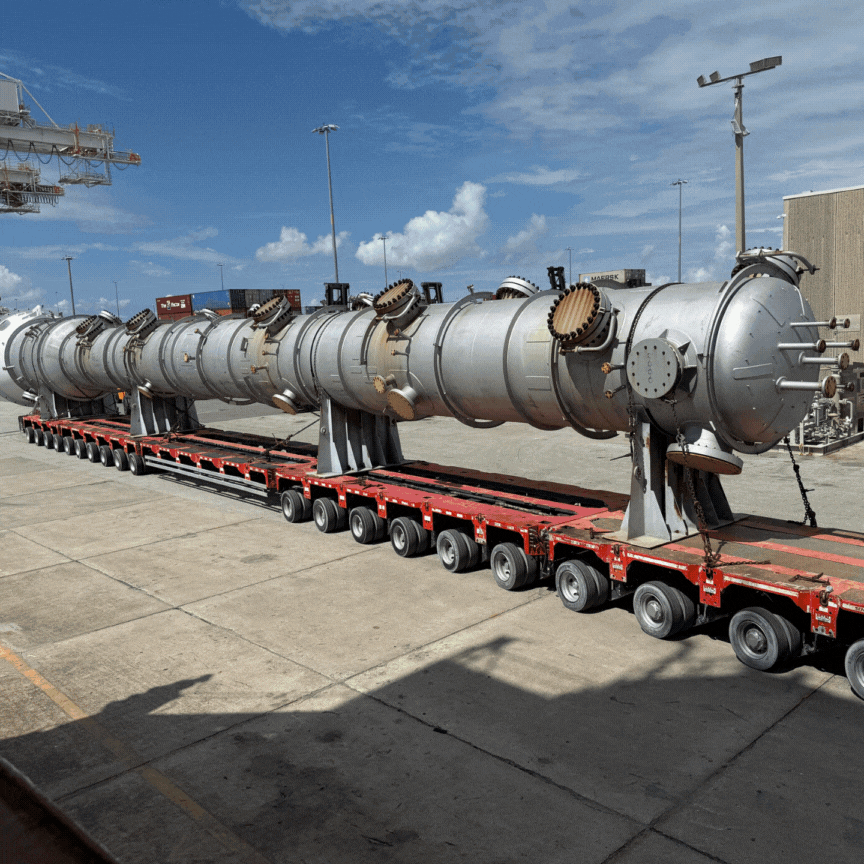


by vanessahuber | Jul 18, 2025 | News
 Brian Russell, Project Manager & DELTA Team at Logistics Plus, was featured on the Business Spotlight program, produced in partnership with WPSE Money Radio. Business Spotlight is a monthly 30-minute program that airs regionally and streams globally.
Brian Russell, Project Manager & DELTA Team at Logistics Plus, was featured on the Business Spotlight program, produced in partnership with WPSE Money Radio. Business Spotlight is a monthly 30-minute program that airs regionally and streams globally.
In this month’s Logistics Plus segment, Brian highlights the unique origins, projects, and future of the DELTA team, sharing valuable insights on achieving success in the logistics industry.
You can listen to a replay of the interview on the Logistics Plus Podcasts page or by clicking below on our LP Radio channel on Spotify.
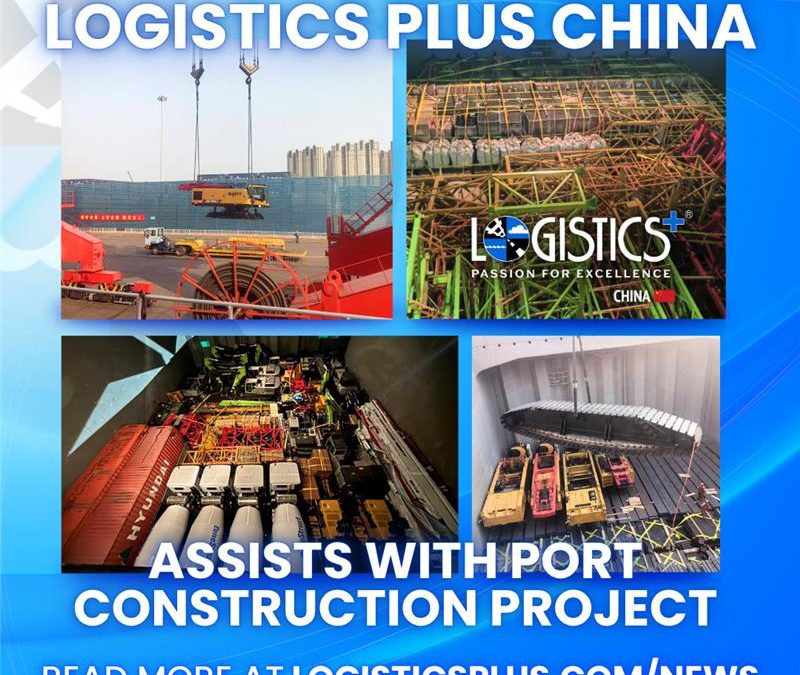
by vanessahuber | Jul 17, 2025 | News
 The Logistics Plus (LP) China team recently completed a complex shipment involving a 7300CBM SANY’s Crawler Crane to Benghazi, Libya. This shipment was crucial for a port construction project that could not begin until the crane was received. This large-scale operation demanded planning, precision, and seamless execution.
The Logistics Plus (LP) China team recently completed a complex shipment involving a 7300CBM SANY’s Crawler Crane to Benghazi, Libya. This shipment was crucial for a port construction project that could not begin until the crane was received. This large-scale operation demanded planning, precision, and seamless execution.
- The entire port was cleared of all vessels to prioritize the shipment’s arrival
- The vessel was granted immediate berthing upon arrival
- Unloading operations began the same day as arrival, ensuring minimal delays
The project was handled with exceptional coordination and treated as a top priority, showcasing the team’s capability to manage high-stakes logistics with care and efficiency.
Photos of the project are available below.
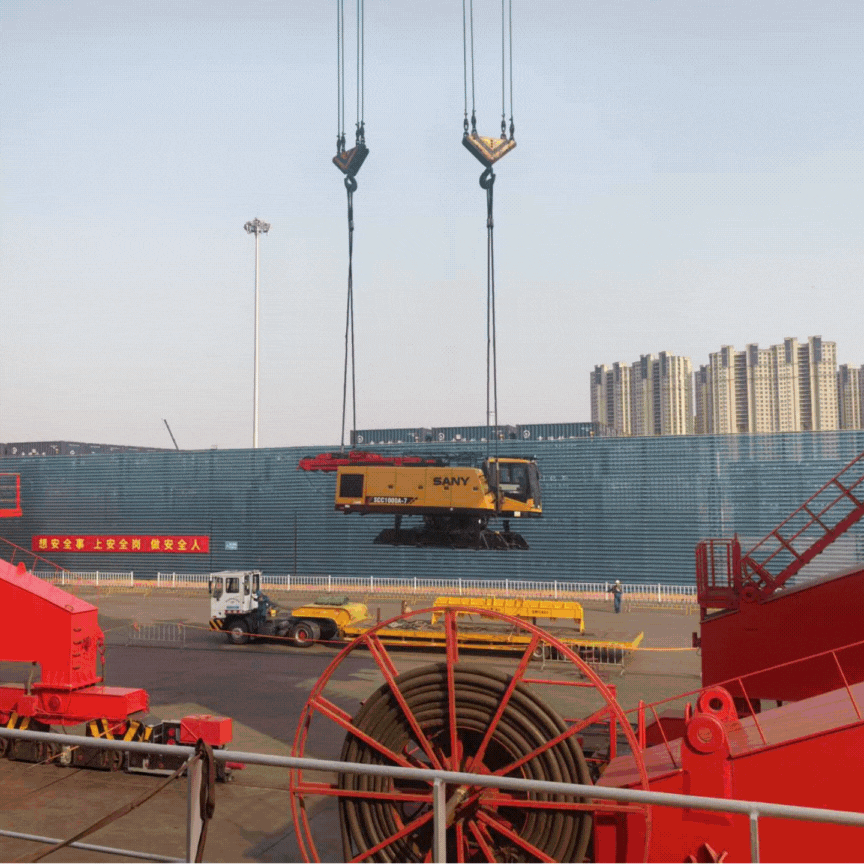

by vanessahuber | Jul 15, 2025 | News
 Logistics Plus was featured in a recent ‘Success Story’ by Zebra Technologies, a technology and intelligent hardware company with which Logistics Plus has been collaborating since 2011. The success story, titled “Logistics Plus Eliminate Mispicks, Speeds up Order Fulfillment and Empowers Teams”, highlights the integration of Zebra’s solutions into the modernization of the Logistics Plus warehousing and fulfillment processes, enabling it to keep pace with industry demands.
Logistics Plus was featured in a recent ‘Success Story’ by Zebra Technologies, a technology and intelligent hardware company with which Logistics Plus has been collaborating since 2011. The success story, titled “Logistics Plus Eliminate Mispicks, Speeds up Order Fulfillment and Empowers Teams”, highlights the integration of Zebra’s solutions into the modernization of the Logistics Plus warehousing and fulfillment processes, enabling it to keep pace with industry demands.
The integration of Zebra’s technology into the comprehensive warehousing solutions offered by Logistics Plus enables the streamlining of the order receiving process, resulting in smoother and more accurate shipments, transformed operations, and a reinforcement of the commitment to excellence in logistics.
This Success Story outlines:
- The Transportation and Logistics Challenge
- The Solution provided by Zebra’s technology in conjunction with Logistics Plus
- The Outcomes and Benefits from the Collaboration
The whole Success Story can be found at https://www.zebra.com/us/en/resource-library/success-stories/logistics-plus-eliminates-mispicks-speeds-up-order-fulfillment-and-empowers-teams-with-zebra.html or by clicking the image below.

About Zebra
Zebra is a global leader in enterprise asset intelligence, providing innovative solutions that offer organizations real-time visibility into their operations. With a portfolio that includes mobile computing, barcode scanning, RFID, and automation technologies, Zebra empowers businesses across industries to improve productivity, accuracy, and customer satisfaction.


 In the customer story and press release, Qlik showcases how Logistics Plus is ‘punching above its weight class’ to deliver world-class BI- and AI-enabled solutions. From efficient service to competitive operation, Logistics Plus has vast data reserves with various platforms and tools that generate them. With the implementation of Qlik Cloud Analysis, vast amounts of information are provided quickly and efficiently, enabling critical information to be returned to customers.
In the customer story and press release, Qlik showcases how Logistics Plus is ‘punching above its weight class’ to deliver world-class BI- and AI-enabled solutions. From efficient service to competitive operation, Logistics Plus has vast data reserves with various platforms and tools that generate them. With the implementation of Qlik Cloud Analysis, vast amounts of information are provided quickly and efficiently, enabling critical information to be returned to customers. 



 The
The 

 Brian Russell, Project Manager & DELTA Team at Logistics Plus, was featured on the Business Spotlight program, produced in partnership with
Brian Russell, Project Manager & DELTA Team at Logistics Plus, was featured on the Business Spotlight program, produced in partnership with 
 The
The

 Logistics Plus was featured in a recent ‘Success Story’ by
Logistics Plus was featured in a recent ‘Success Story’ by 
